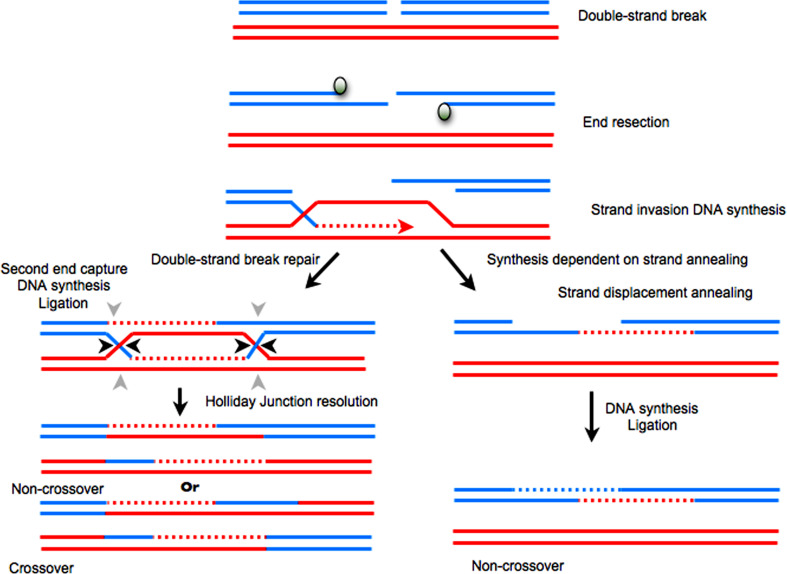Fig. 3.
Double-strand breaks (DSBs) can be repaired by several homologous recombination (HR)-mediated pathways, including double-strand break repair (DSBR) and synthesis-dependent strand annealing (SDSA). Upper In both pathways, repair is initiated by resection of a DSB to provide 3′ single-stranded DNA (ssDNA) overhangs. Strand invasion at these 3′ ssDNA overhangs into a homologous sequence is followed by DNA synthesis at the invading end. Lower left After strand invasion and synthesis, the second DSB end can be captured to form an intermediate with two Holliday junctions (HJs). After gap-repair DNA synthesis and ligation, the resolved structure at the HJs may be a non-crossover (black arrowheads at both HJs) or crossover product (green and black arrowheads). Lower right Alternatively, the reaction may proceed to SDSA by strand displacement and the annealing of the extended single-strand end to the ssDNA at the other break end, followed by gap-filling DNA synthesis and ligation. The repair product from SDSA is always non-crossover

